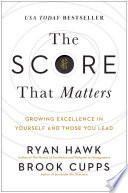

The book emphasizes the importance of identifying and focusing on the key metrics that truly drive success in any endeavor. It argues that too many businesses and individuals get caught up in tracking a plethora of metrics that do not contribute to their primary goals. By honing in on the most impactful metrics, readers can streamline their efforts and ensure that they are making progress toward their main objectives. This concept is rooted in the idea of the 'One Metric That Matters' (OMTM), which encourages individuals to prioritize the metric that will have the most significant impact on their success. The book provides frameworks and examples to help readers identify their OMTM and offers strategies for how to leverage this focus to achieve greater outcomes.
Continue readingThe author discusses the critical importance of aligning team objectives with the overarching goals of the organization. When teams understand how their work contributes to the larger mission, they are more motivated and engaged. The book outlines methods for effective communication of these objectives and emphasizes the need for regular check-ins to ensure alignment. It also highlights the risks of misalignment, such as wasted resources and decreased morale, and provides case studies of organizations that have successfully navigated this challenge. By fostering a culture of alignment, organizations can enhance collaboration and drive better results.
Continue readingIn an age where data is abundant, the book underscores the necessity of making data-driven decisions rather than relying on intuition or assumptions. It explains how to collect, analyze, and interpret data to inform strategic choices. The author advocates for the use of analytics tools and methodologies to derive insights from data and discusses common pitfalls to avoid, such as confirmation bias and overfitting. By embracing a data-driven mindset, individuals and organizations can make more informed decisions that lead to better outcomes. The book provides practical tips for integrating data analysis into daily operations and decision-making processes.
Continue readingThe concept of continuous improvement is a central theme in the book. It encourages readers to adopt a mindset of ongoing learning and adaptation. The author discusses various frameworks, such as Lean and Agile methodologies, that promote iterative progress and incremental enhancements. By regularly assessing performance and seeking feedback, individuals and teams can identify areas for improvement and implement changes that lead to greater efficiency and effectiveness. The book emphasizes that improvement is not a one-time effort but a long-term commitment that requires persistence and resilience.
Continue readingThe book delves into the importance of cultivating a performance-oriented culture within organizations. It identifies key characteristics of high-performing cultures, such as accountability, transparency, and recognition. The author provides actionable strategies for leaders to foster such an environment, including setting clear expectations, providing regular feedback, and celebrating achievements. By creating a culture that values performance, organizations can enhance employee engagement, retention, and overall success. The book also discusses the role of leadership in modeling the desired behaviors and creating an atmosphere where everyone is encouraged to excel.
Continue readingTechnology is portrayed as a powerful enabler in achieving the score that matters. The book discusses how to leverage technology to enhance productivity, streamline processes, and improve communication. It provides insights into various tools and platforms that can help individuals and teams stay organized and focused on their key metrics. The author warns against the dangers of over-reliance on technology, advocating for a balanced approach that combines human insight with technological capabilities. By embracing technology thoughtfully, organizations can unlock new levels of performance and efficiency.
Continue readingFinally, the book emphasizes the need for regular reflection as a critical component of achieving success. The author encourages readers to take time to assess their progress, celebrate wins, and learn from failures. This reflective practice helps individuals and teams to recalibrate their strategies and stay aligned with their goals. The book suggests various techniques for effective reflection, such as journaling and team retrospectives, which can facilitate deeper insights and foster a culture of learning. By making reflection a habitual practice, readers can ensure they remain focused on the score that truly matters.
Continue reading